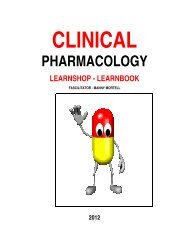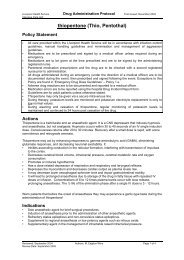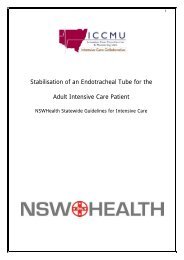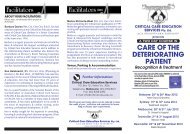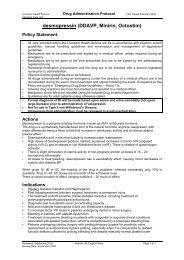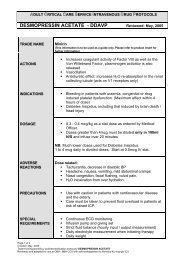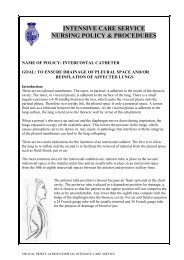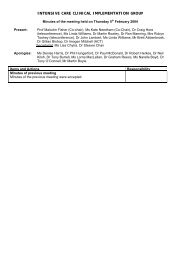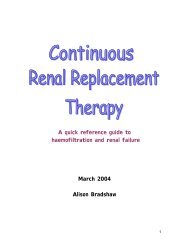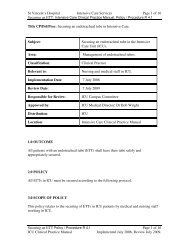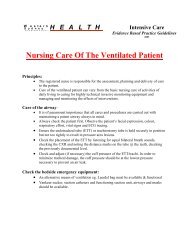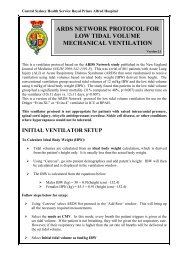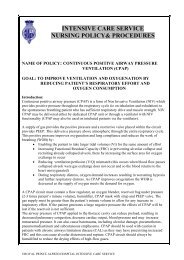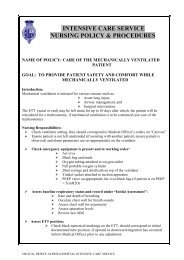Care of Cranio-cervical Traction - Intensive Care & Coordination ...
Care of Cranio-cervical Traction - Intensive Care & Coordination ...
Care of Cranio-cervical Traction - Intensive Care & Coordination ...
You also want an ePaper? Increase the reach of your titles
YUMPU automatically turns print PDFs into web optimized ePapers that Google loves.
Resources<br />
Neurosurgeon<br />
Neurosurgical Registrar<br />
Senior Medical Officer<br />
Senior Registered Nurse<br />
Steps<br />
Procedure Rationale<br />
The procedure will usually be performed<br />
by the Neurosurgeon, in the <strong>Intensive</strong><br />
<strong>Care</strong> Unit or in the Operating Theatre. It<br />
is performed under local anaesthetic,<br />
although light sedation may be required.<br />
The patient will need to be placed onto a<br />
“traction” bed, and informed consent<br />
must be obtained. After clipping the hair<br />
at the insertion site, the area is<br />
anaesthetised and a small cut made into<br />
the skin on both sides <strong>of</strong> the head<br />
(usually 4cms above the external<br />
auditory meatus). The Tongs are then<br />
screwed into place and traction applied<br />
as ordered by the Neurosurgeon.<br />
As previously mentioned, the patient<br />
must be transferred to a “traction” bed.<br />
This must be done using the Jordan<br />
Frame, registrar and four other people.<br />
The registrar will support the head and<br />
neck while two staff stabilise the frame<br />
while in the air, one staff to move out the<br />
ICU bed and replace it with the traction<br />
bed, and one staff to work the lifter.<br />
Once the tongs are in situ, care must be<br />
taken with the tongs.<br />
The pin sites should be cleaned with half<br />
strength Chlorhexidine/Normal Saline<br />
daily and left uncovered if dry If the pin<br />
sites are moist then cover them with dry<br />
gauze.<br />
The two “locking” nuts should be checked<br />
at least twice a day to ensure they are<br />
firmly screwed on.<br />
The spring-loaded pin on one side should<br />
be protruding 1 to 2 mm from the centre.<br />
This should be checked at least twice a<br />
Wentworth Area Health Service<br />
<strong>Care</strong> <strong>of</strong> <strong>Cranio</strong>-<strong>cervical</strong> <strong>Traction</strong><br />
Using the Jordan lifter is the safest way<br />
to move these patients. The registrar will<br />
support the neck to prevent movement<br />
that may cause spinal damage.<br />
This is to reduce the risk <strong>of</strong> infection.<br />
This is to prevent the tongs’ screws from<br />
loosening.<br />
This pin should be checked because if<br />
loose, could lead to the traction slipping<br />
and the tongs tearing the scalp. Also



